This super late bloom on the prickly pear caught my eye the other day. We've never had such a late bloom on this cactus before, but the flowers are beautiful and I'm always happy to see them. We're hoping the little 'pears' on this guy will get nice and fat this year so we can try some prickly pear lemonade.

We have a lot of wild phlox here, and this year we're gathering some seed to give out as Christmas presents. The medium sized patch in the picture below should provide more than enough.

The one in this picture is a little green to pick for seeds, but it really showed how prolific they are. Each of those long pods will hold about a dozen seeds.

When they're ready, the seeds drop really easily, so I take a bucket right with me. I bend the heads of the plants down into the bucket so the bucket catches most of the drops, then I snap off the top and stuff the whole thing in the bucket. You can see that several dozen loose seeds have already been caught. For more info on winnowing your seeds, see the videos at the beginning of my feed.
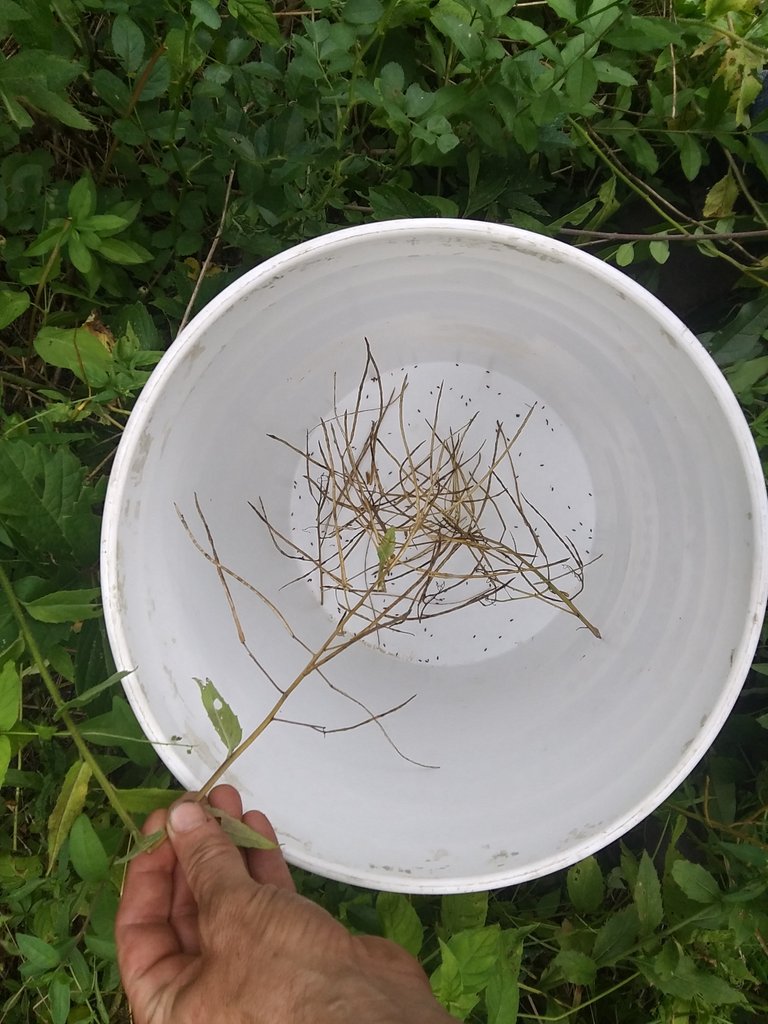
Below is one of the local belladonna varieties we've been working to eradicate from our food areas. I'm not sure of the specific name for this variety, but I am quite sure they're poisonous.
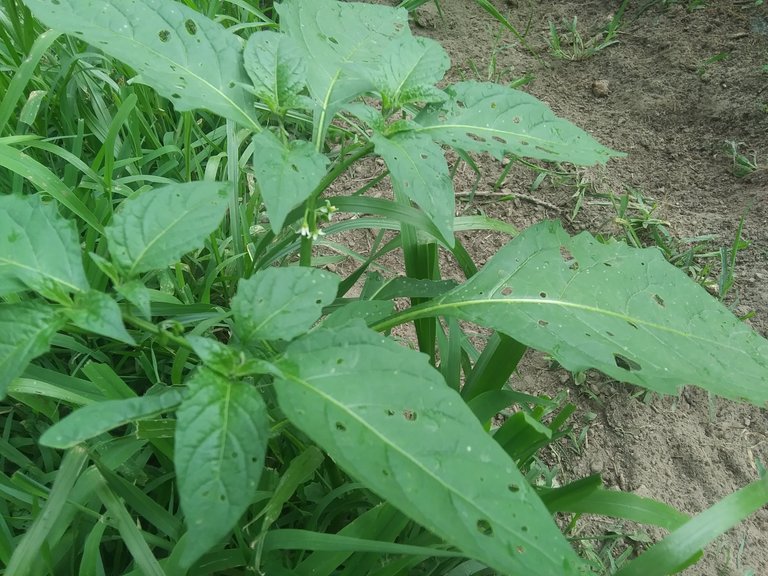
The leaves on this aren't as easy to spot as the typical belladonna vines with the bright berries that we usually see around here. They kinda look like potato stalks, but I've dug some up and they don't seem to grow any tubers. That doesn't mean that they can't contaminate my potatoes, though, which a big reason why we try to keep them away from food areas. Potatoes, tomatoes, and peppers are all in the belladonna family. The flowers come in different colors and sizes, but all the ones I know of grow in clusters like the ones in the picture below, and they all have that same shape.
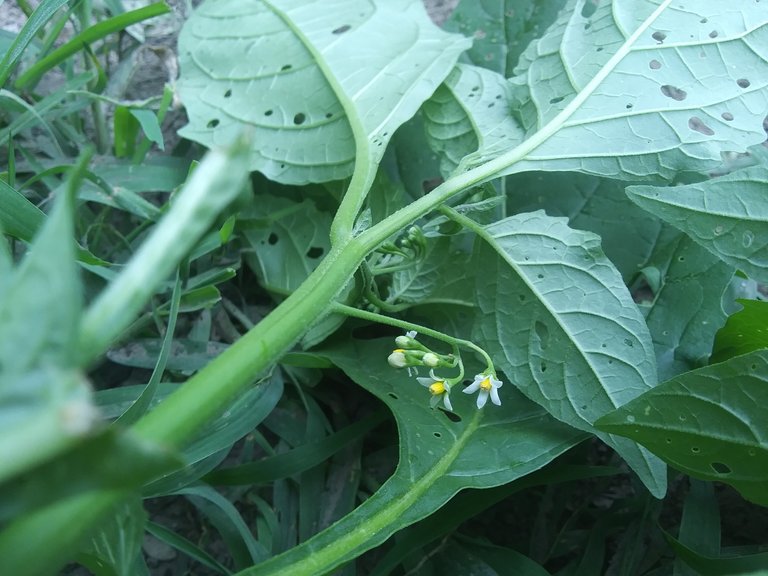
Speaking of potatoes, I found some great starter-sized white potatoes in my compost this year, and I'm using them to try a method I have heard about but never practiced. You place your starters in the bottom of a five gallon pail with some drainage holes, and cover them with straw.
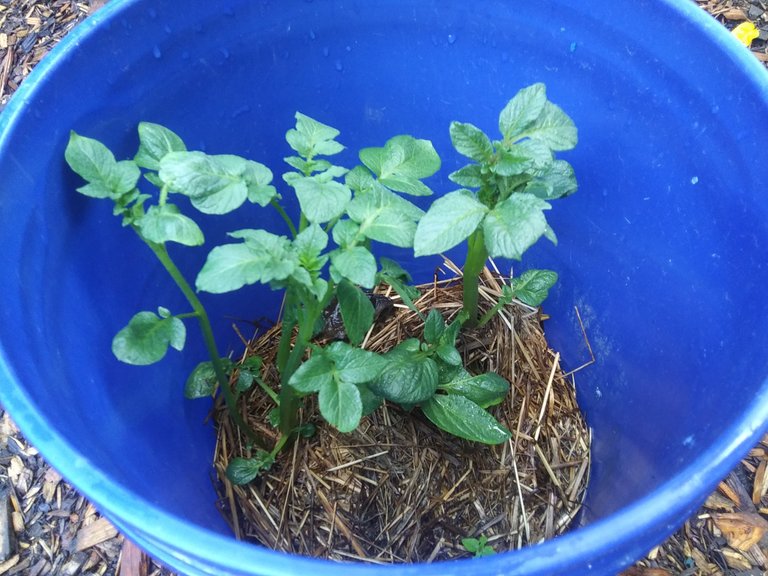
As the stalks grow, you cover them up to the top with fresh straw, until your bucket is filled to the top with the straw. You then let them finish growing, and when it's harvest time you simply dump out the bucket. I'm eager to see how it turns out.
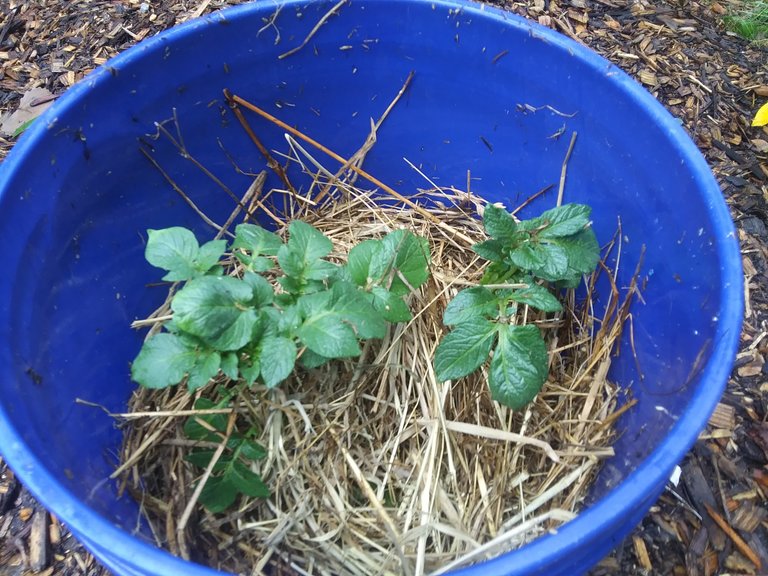
Our Frankenmint is flowering out beautifully. We don't normally bother collecting mint seeds, since it comes back and spreads every year through its roots. This year I'll try to get some, also for sending out at Christmas time.
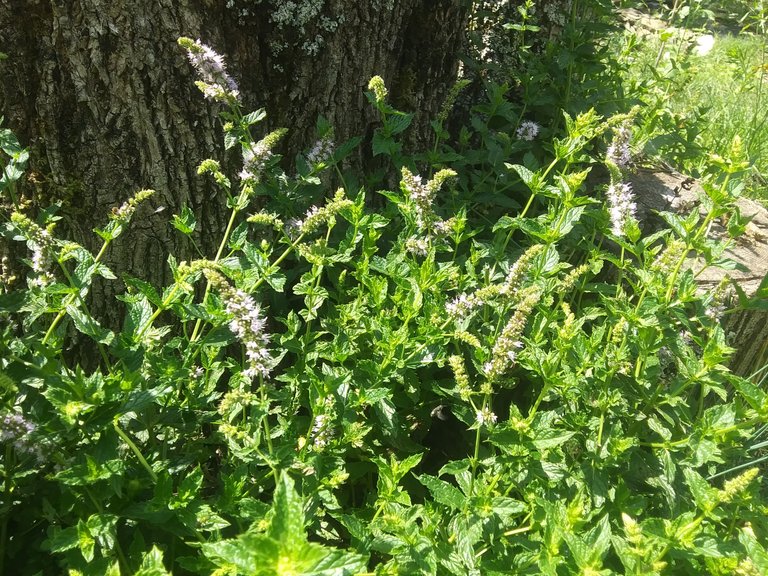
I knew that most of the new hens had to be laying by now, and I've spent hours over the last two weeks trying to find out where. I finally came across their spot, under some old pool steps. You can just see my fingertips at the bottom of the pic. I'm holding over a piece of plastic that blows easily over this pile of eggs and covers them up, which is probably why I didn't find them sooner.
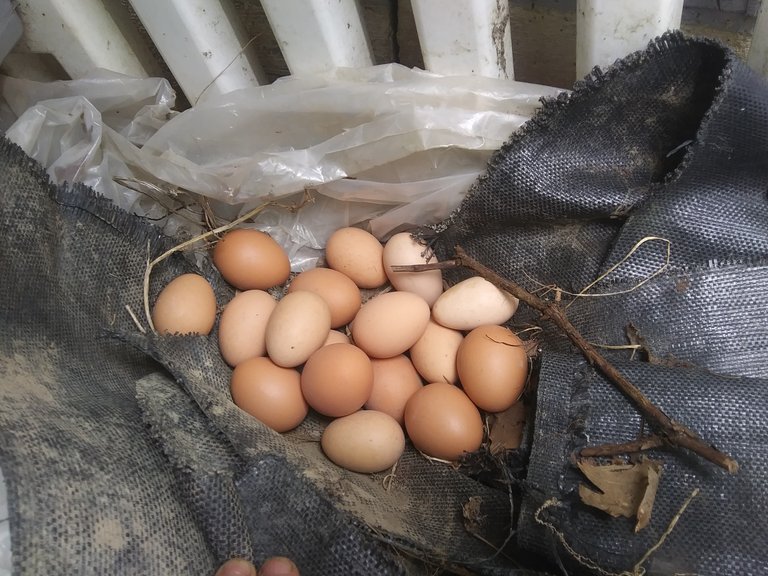
I had hoped maybe this sweet girl was getting broody already, but it turned out she was trying to lay an egg in a less crowded spot.

Most of the wild mustard seeds will get harvested this weekend, the rest of it probably by next weekend. If you like mustard, I highly recommend making some of your own. It's super easy, practically free, and will leave you wondering why you didn't treat yourself earlier.
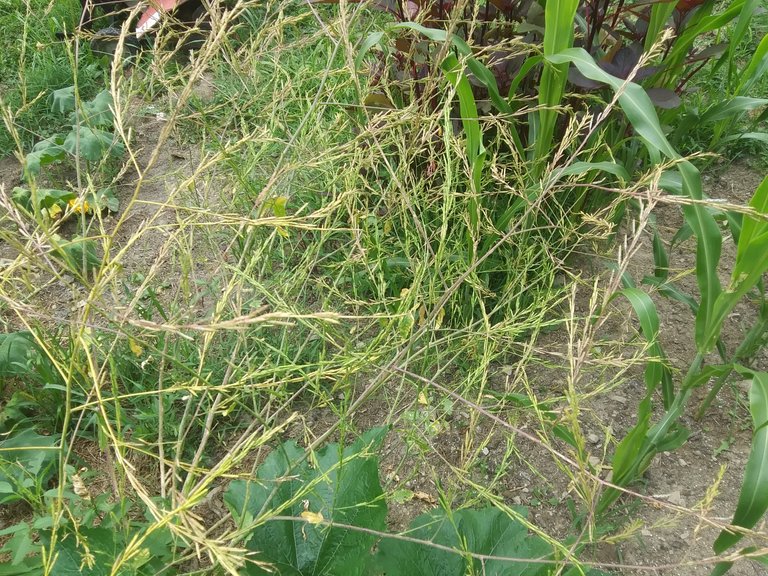
I turned the compost into the other bin and began refilling this one. A little tomato popped up shortly after it was cleared, probably a large red cherry. I threw a few of them into the compost pile 2 or 3 years ago, and they pop up all over now, like the asparagus.
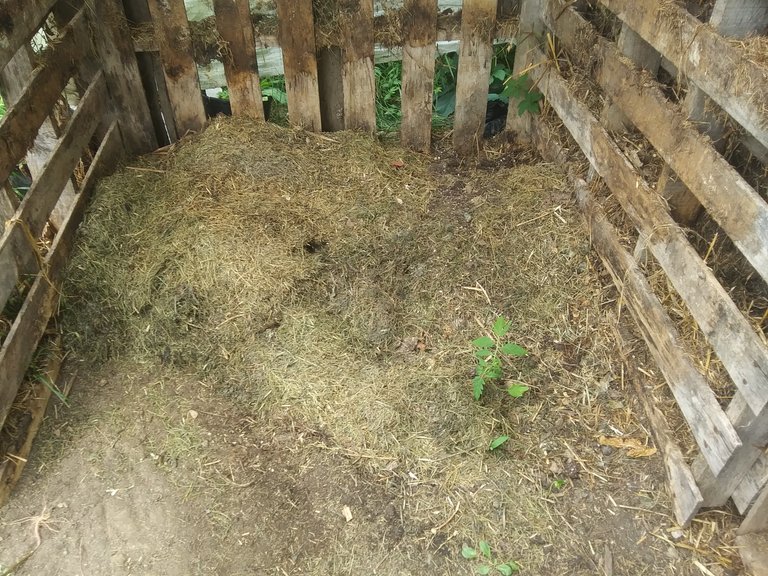
Some variety of squash also popped up on top of the turned pile. I can't identify them well enough when they're small to say exactly what this one is, but it looks a lot like a cucumber.
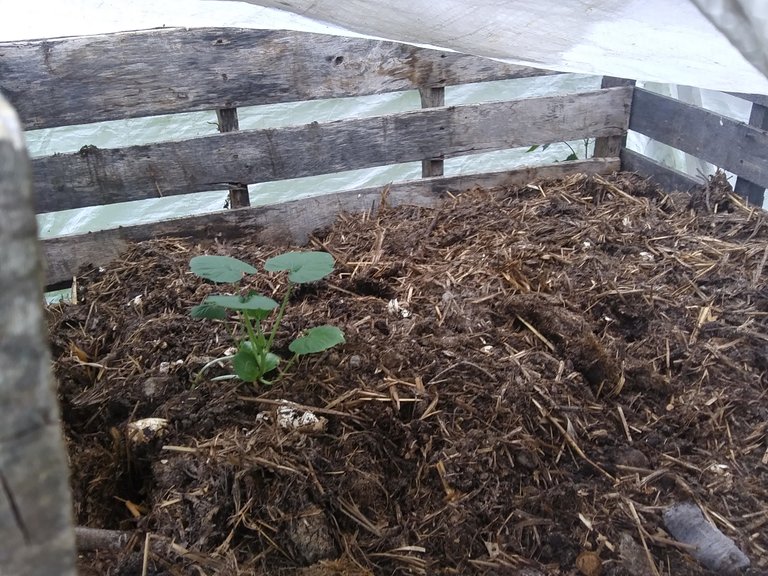
Our everbearing strawberries are doing okay this summer. They have set lots of fruit, but it still isn't quite maturing properly. I know this is due in part to nutrient deficiency, but I also think that the strawberries don't like being covered with this plastic. Next year I'm going to pull the plastic up and just mulch them.

Our dwarf fruit trees did throw out a few flowers this year, but our late freeze destroyed them all. They are finally showing some real growth, though, and I hope to get at least a taste of fruit from each of them next year.
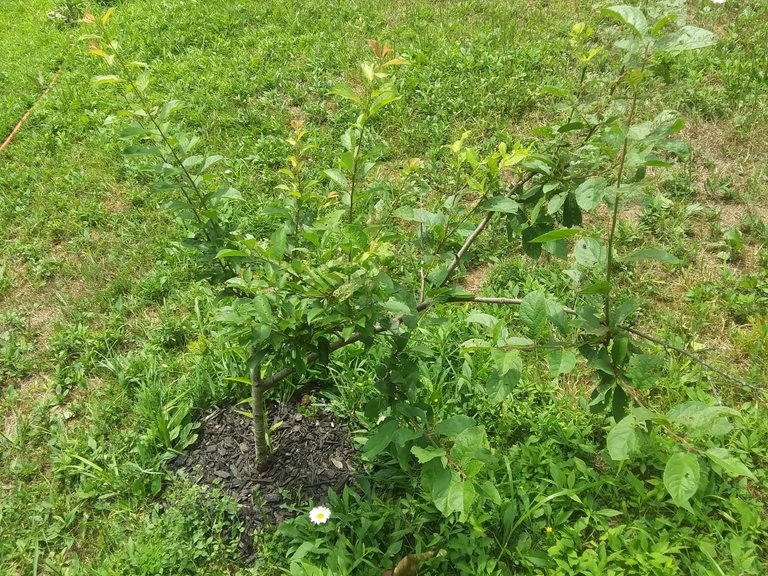
They've really seen a lot of hardship. We've had them about 5 years, but they've only actually been planted for two. This is the first year that they've consistently been mulched, fed, and watered.

Our new Hopi red dye amaranth has been doing amazing, and is just starting to get some fuzzy looking flower heads.
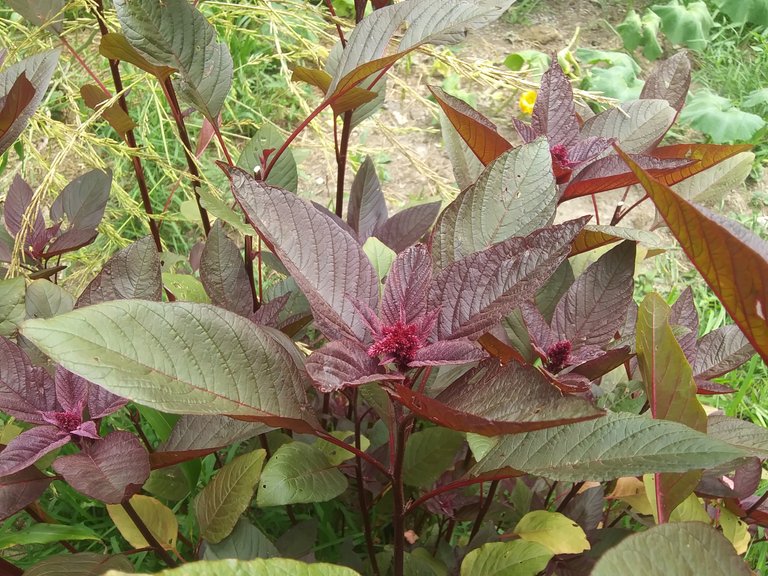
The William's sorghum has picked up a few aphids, but some ladybug helpers are already moving in to take care of that problem for us. A couple stalks show some minor signs of damage, but I'm still hoping they do all right. We'd like to at least get enough seed to plant them again next year.
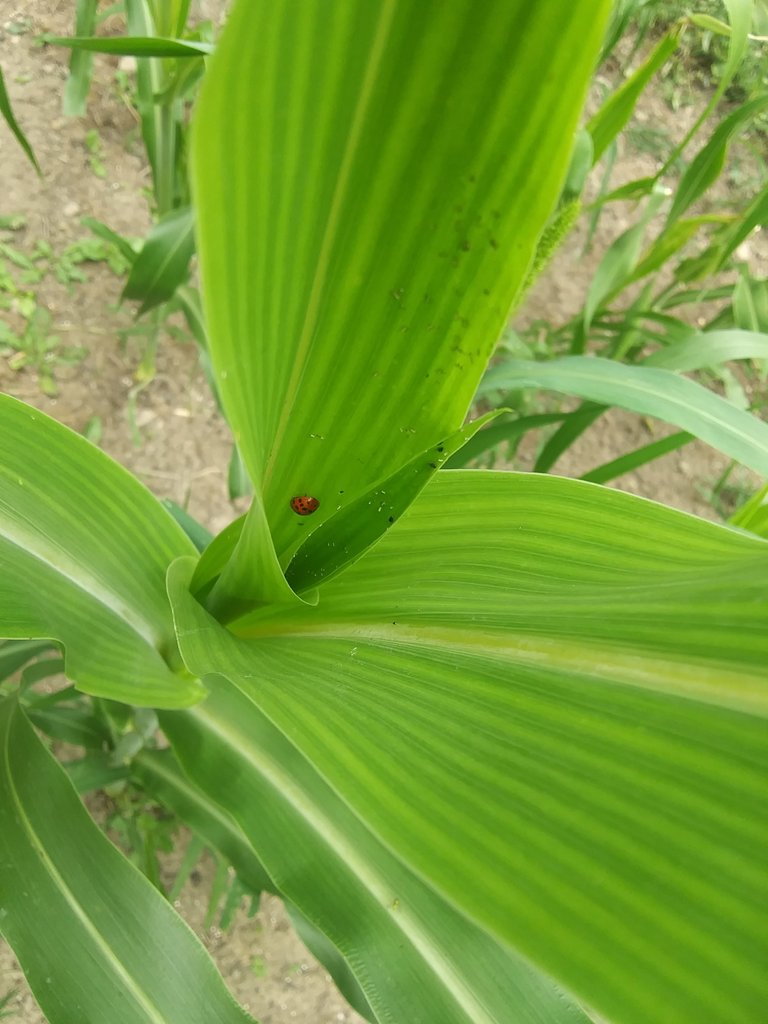
The first cayenne peppers are showing their eye popping color as well. Cayennes have always loved it here. Even in years where the gardens spent the whole summer neglected, I would harvest at least a shopping bag full of these little beauties.
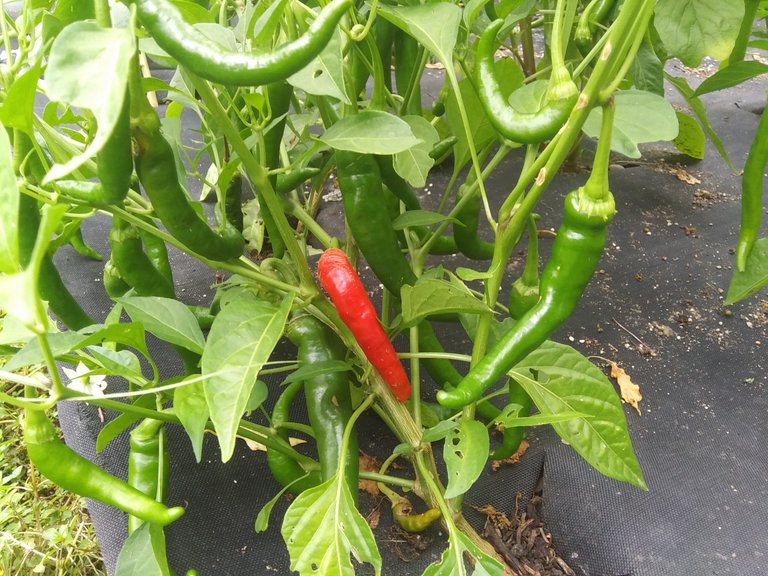
All that walking around had me thirsty, so I started a batch of homemade ginger ale. For the first time, I used honey and molasses for my sweeteners. The molasses naturally made it quite a bit darker, but the flavor difference wasn't as noticeable as I thought it would be. The fresh ginger really overpowers a lot.
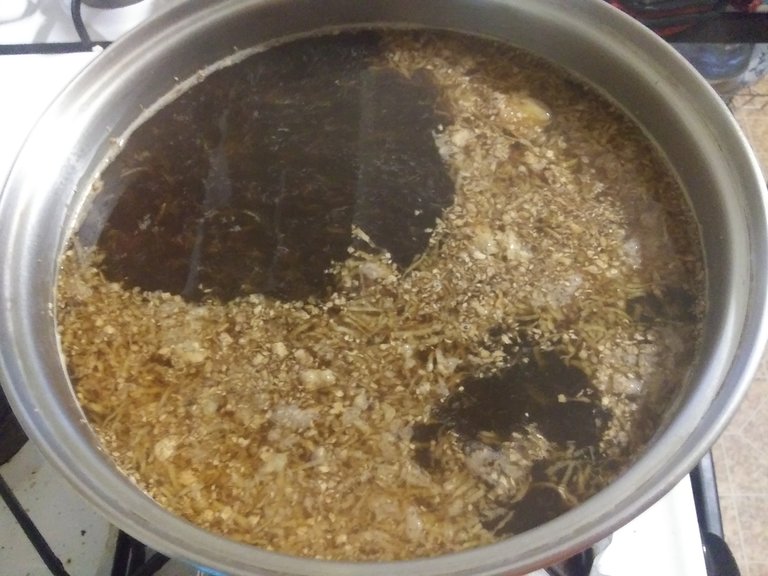
It looks a little less dark in the tasting cup. I didn't have any starter to add this time, so after this mix cooled I tossed in some fresh grated ginger root that didn't make it into the pot before cooking. This should have enough yeast to get fermentation going, but it will take significantly longer.
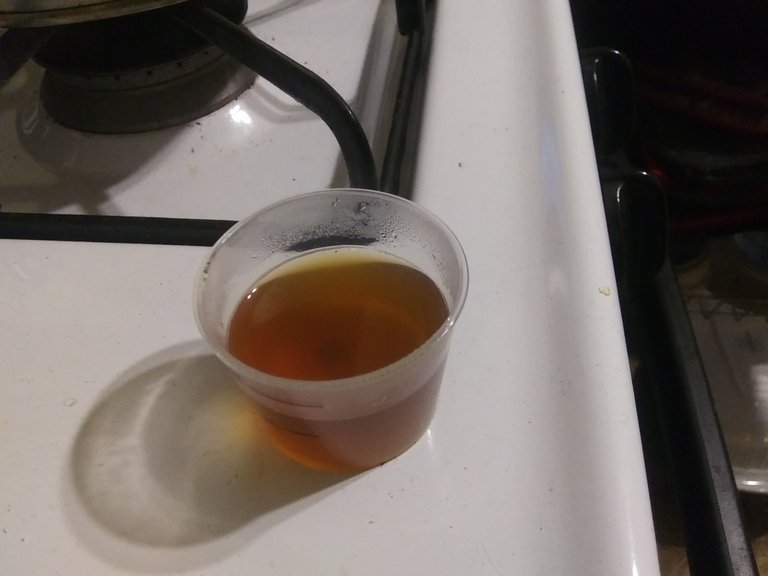
While getting out the stuff to bottle up my ginger ale, I came across my 'dregs' bottle of bramble berry wine that I had completely forgotten about. The dregs is basically the heavier stuff left at the bottom of the pots when I make wine, which I usually also throw in a bottle to ferment. Sometimes I get something vinegar like, sometimes I get something wine like. Either way, it's not really fit to drink, but it's great for cooking. This batch had good flavor, and more than a little alcohol content, but it's just too thick for normal consumption. Even if I hold this bottle up to the sun, I can't see the light through it. I'm thinking it will be delicious on fish, though.

That's all for now, folks. If you have any questions about anything you see here, ask in the comments. Good questions might even get their very own post in reply.
Take care, be well, and I hope to see you all back!
Hey I am really interested in trying out the bucket method for growing potatoes you found. I've always avoided growing potatoes in the past because it doesn't grow as a good companion in the garden with other vegetables, and digging them up always seemed like it would be a messy waste of the good soil I've built up.
Any alternatives that will work in place of straw, if I don't have any?
Any kind of loose, dry, organic material should work just fine. Dry leaves, dry lawn clippings, even wood chips or sawdust may work. Potatoes aren't particularly fussy about where they grow. It may even be possible to use shredded paper, but I avoid this because many inks contain toxic heavy metals that can be absorbed by your plants and passed on to you.
You could also use dirt, compost, or even potting soil, but I've found from similar methods that these can get packed in quite tight and be hard to dump out.
WoW very impressive homesteading. Very nice post. I am always experimenting but I live in the city.
I currently have potatoes growing in a large flower pot - I will see how that goes.
I made ginger beer that turned out well. I tried kombucha once but the scobie was a bit creepy. 😀
Have you ever tried making kombucha?
No, I haven't yet tried the kombucha. The process seemed a bit more involved, and I didn't really like the kombucha enough to go through it.
I will be doing another batch of the ginger ale today, though, and maybe even some kinda cream soda today, if I can find the vanilla bean.
Kombucha making is easy but as I said the scobie (I corrected the spelling above) can be creepy. If I make it again - I will write about it.
Cream soda - if you do make it please write about it.
I’ve featured your post in The Lotus Garden newsletter, which will be published tomorrow.
Curated for #naturalmedicine (by @minismallholding) - join our community here.
The Lotus Garden is a newsletter supporting content relevant to Homesteaders & supported by Natural Medicine. Earn LOTUS & HIVE for your #homesteading content!
About II Discord II Community
Thanks again!
Congratulations @paradoxtma! You have completed the following achievement on the Hive blockchain and have been rewarded with new badge(s) :
You can view your badges on your board And compare to others on the Ranking
If you no longer want to receive notifications, reply to this comment with the word
STOP